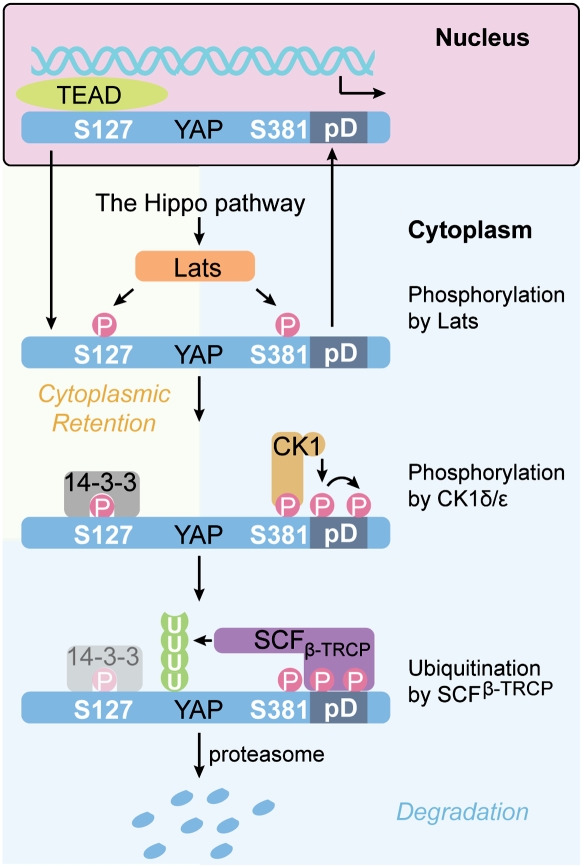Figure 8.
A model of YAP inhibition by the Hippo pathway and CK1. When the Hippo pathway is activated, YAP is phosphorylated on both S127 and S381 in the HXRXXS motifs. Phosphorylation of S127 results in 14–3–3 binding and cytoplasmic retention of YAP. Therefore, YAP can be inhibited by spatial separation from its nuclear target transcription factors, such as TEAD. This mechanism of regulation is reversible. Phosphorylation of S381 primes YAP phosphorylation by CK1δ/ɛ, resulting in activation of a phosphodegron, which then recruits the SCFβ-TRCP E3 ubiquitin ligase, leading to YAP degradation. This mechanism of regulation is irreversible. Through these two mechanisms, YAP activity is under both spatial and temporal control, which coordinately inhibit YAP oncogenic activity.

